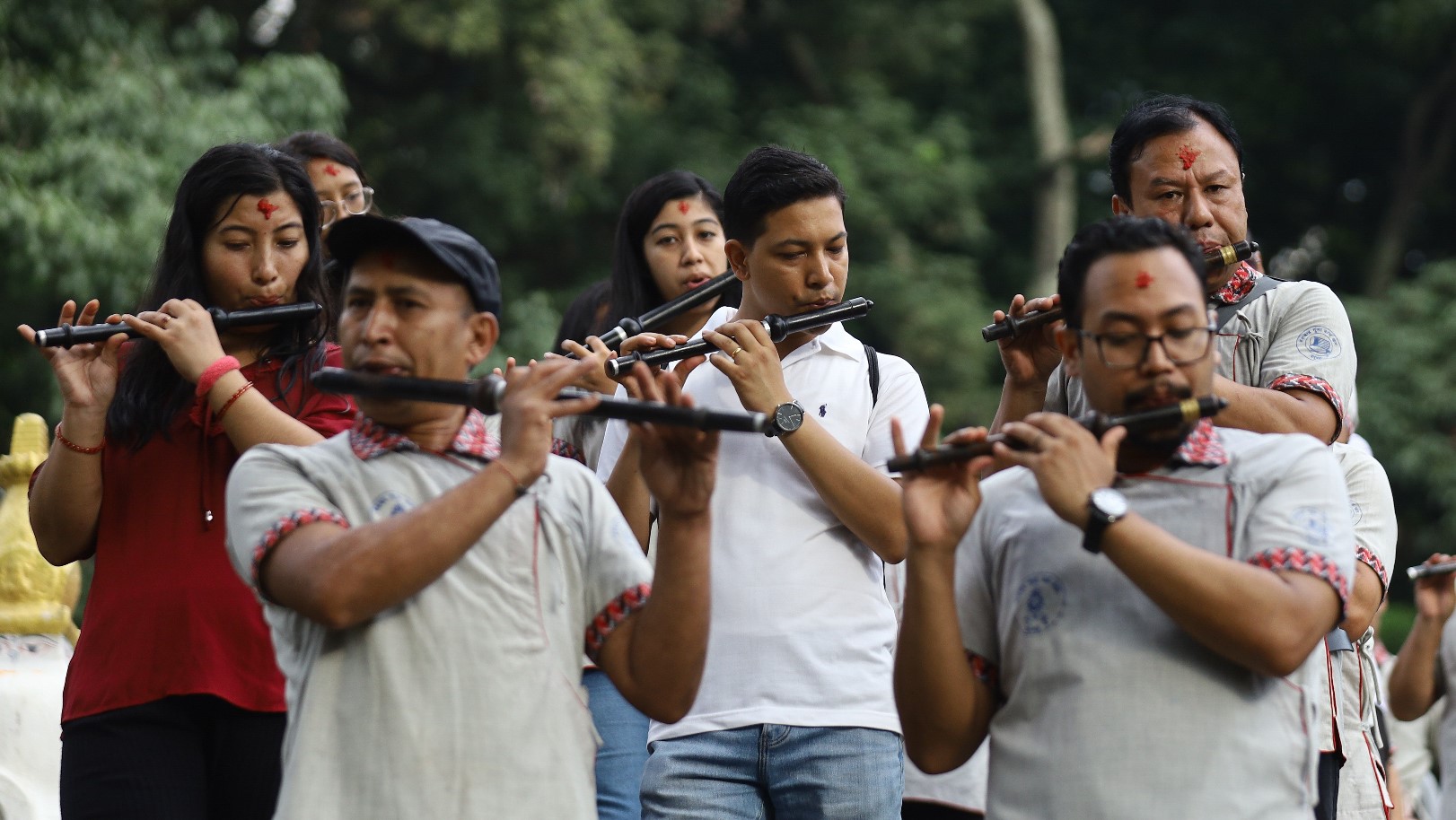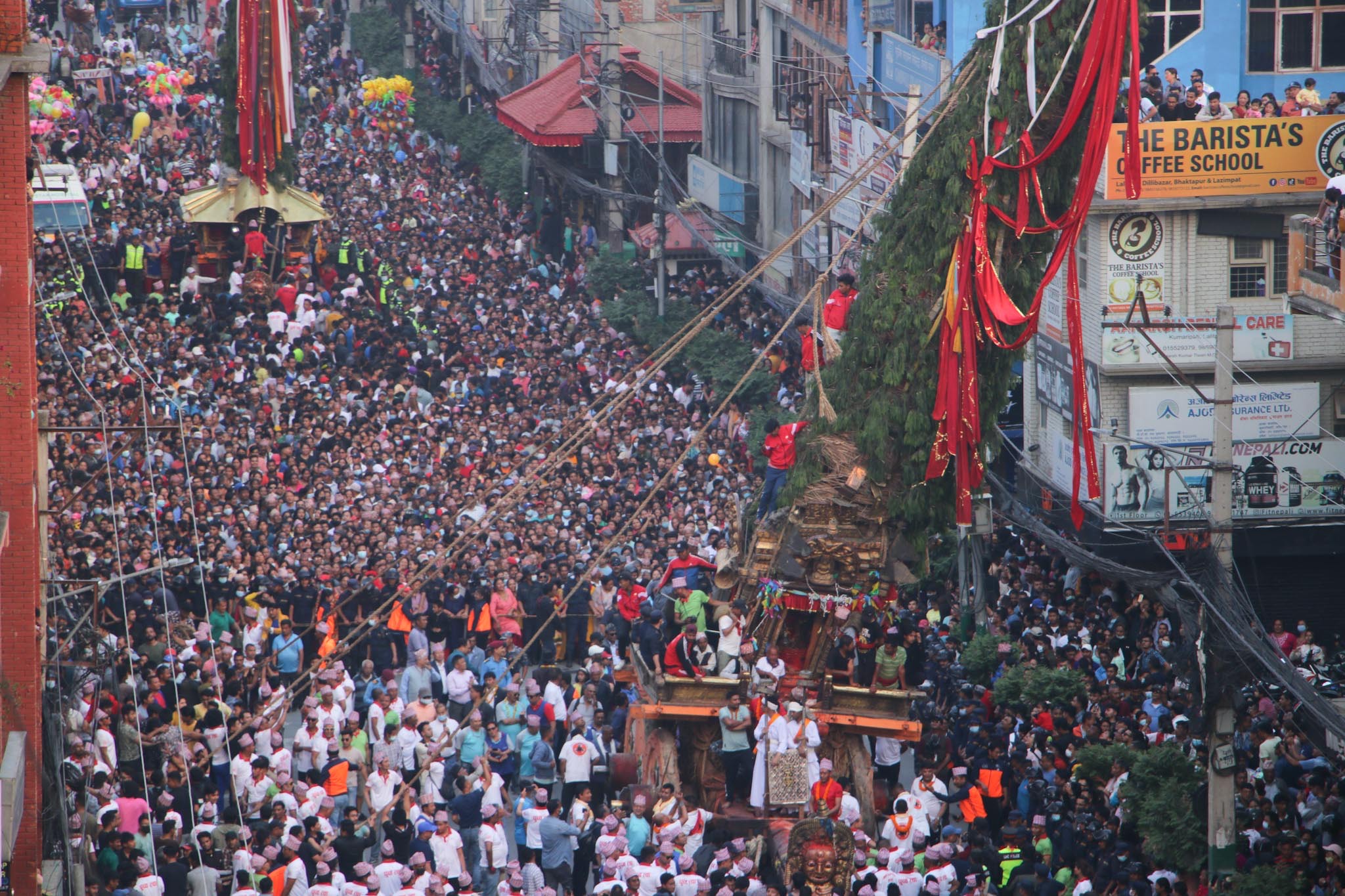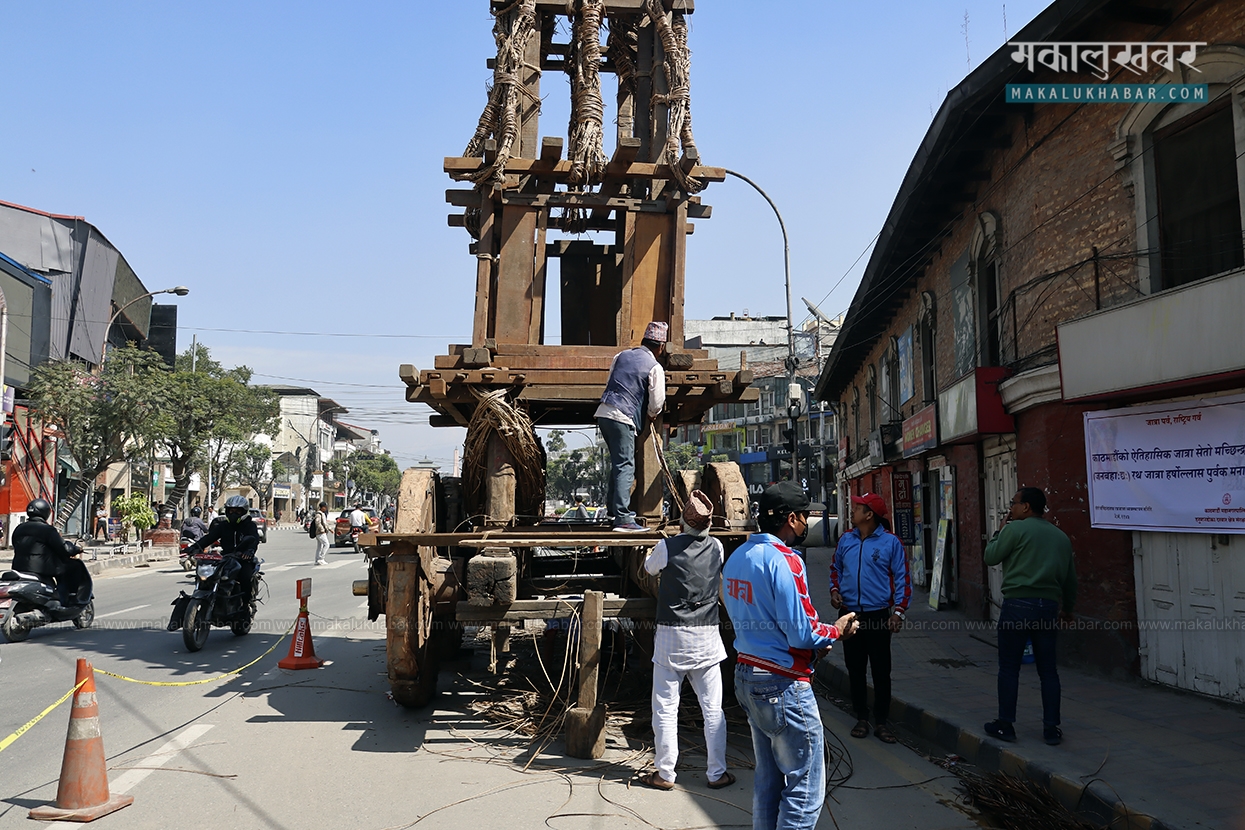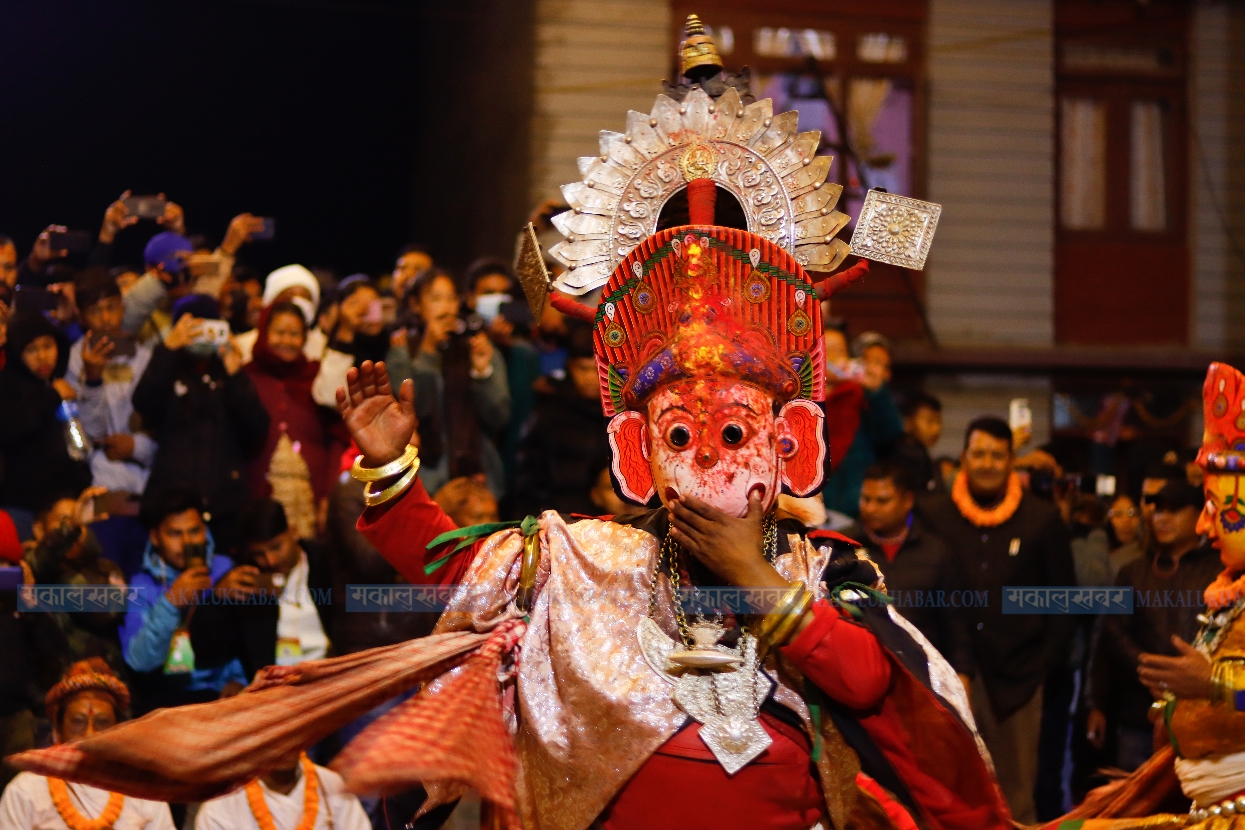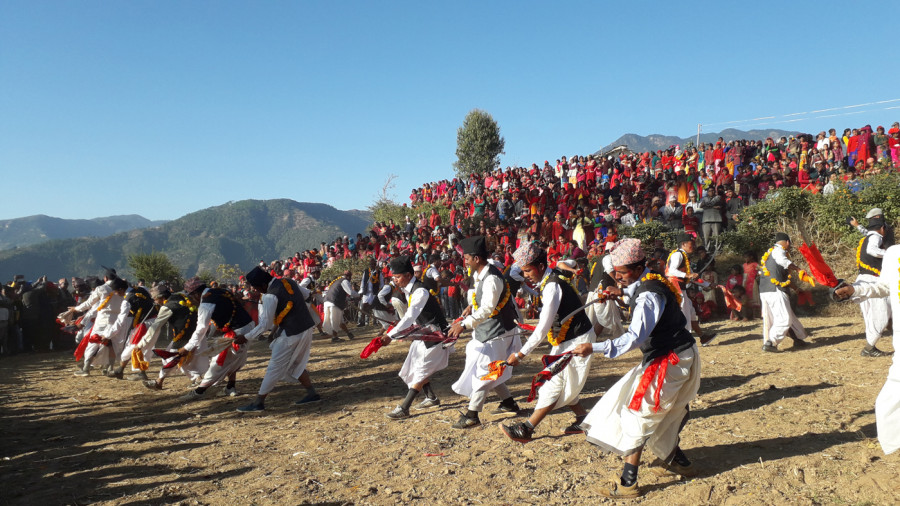Nag Panchami festival is being celebrated today
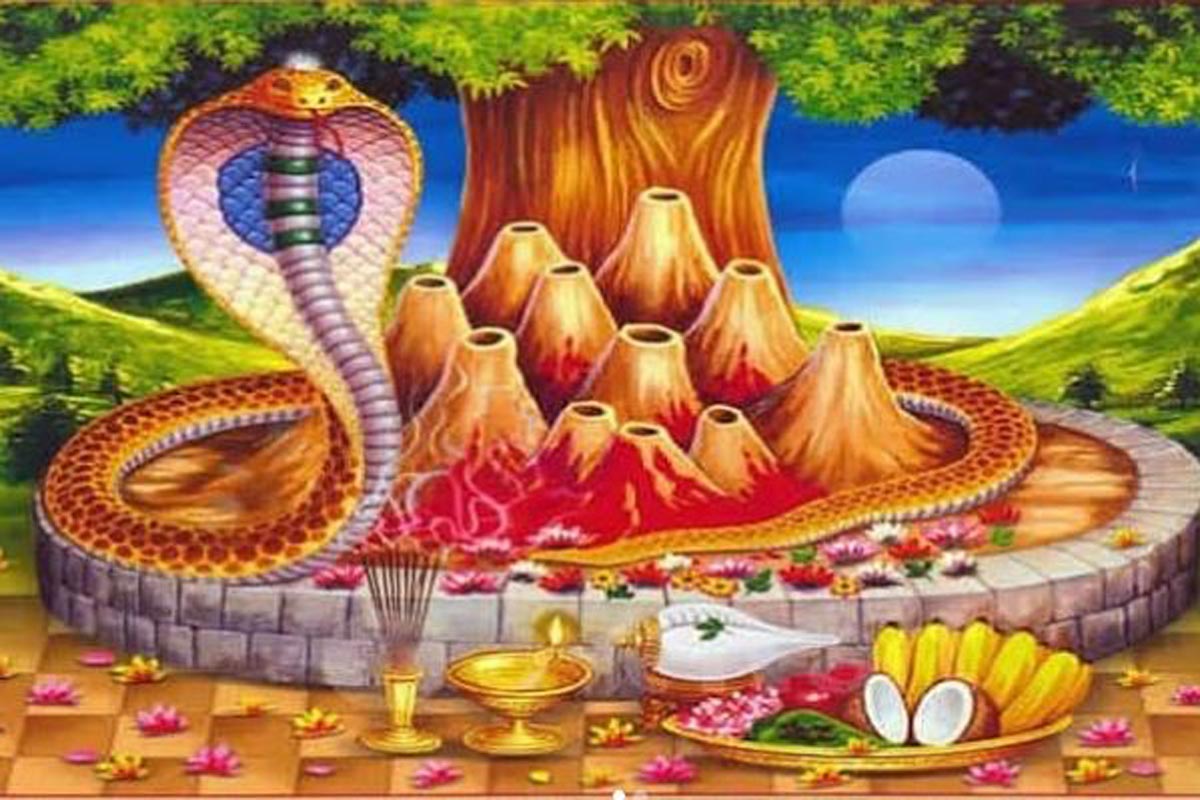
KATHMANDU: AUGUST 13 – The Nag Panchami Festival that falls on the Shrawan Shukla Panchami as per the lunar calendar is being observed today across the country by Hindus as per the time-honoured tradition.
As part of the festivities, a Nag or serpent deity made of silver, stone, wood, or a painting of snakes is given a reverential bath with milk and their blessings are sought for the welfare of the family. Live snakes, especially Cobras, are also worshipped on this day, especially with offerings of milk and generally with the assistance of a snake charmer.
In the Mahabharata epic, the sage Astika’s quest to stop the sacrifice of serpents (Sarpa Satra) of King Janamejaya, is well known, as it was during this sacrifice that the Mahabharata as a whole was first narrated by the sage, Vaisampayana. This yagna sacrifice was performed by Janamejaya to decimate the race of Nagas by killing every snake in existence to avenging the death of his father Parikshita due to the deadly bite of Takshaka, the king of the snakes. The day that the sacrifice was stopped, due to the intervention of the Astika, was on the Shukla Paksha Panchami day in the month of Shrawan. That day has since been observed as Nag Panchami.
There are numerous stories related to Nag Panchami. According to Hindu Mythology, Lord Krishna was playing with his friends near the banks of the Yamuna river. Suddenly, the ball landed in the water. The Lord went into the river and Kaliya (serpent) attacked him.
Krishna then grabbed the serpent’s tail and dragged him to the river surface and defeated him. Kaliya at that time realized that Krishna was no ordinary child, but an incarnation of Lord Vishu. He begged for forgiveness and promised never to torment anyone ever again. Thus, this festival also marks the victory of good over evil.
Traditions
As it is believed that snakes have more powers than humans and on account of its association with Shiva, Devi, Vishnu and Subramanya, a degree of fear is instilled resulting in the deification of the Cobra and its worship throughout the country by Hindus.
Snake has a connotation with the Moon’s nodes known in Hindu astrology. The head of the snake is represented by Rahu (“Dragon’s head”) and its tail by Ketu (“Dragon’s tail”). If in the zodiacal chart of an individual all the seven major planets are hemmed between Rahu and Ketu in the reverse order (anticlockwise) it is said to denote Kalasarpa dosha (Defect due to black snakes), which forebodes ill luck and hardship in an individual’s life and therefore appeased by offering worship to the snakes on Naga Panchami day.
Worship
On the day of Nag Panchami, Nags, cobras, and snakes are worshipped with milk, sweets, flowers, lamps, and even sacrifices. Naga or serpent deities made of silver, stone, wood, or paintings on the wall are first bathed with water and milk and then worshipped with the reciting of the following mantras.
Fasting is observed on this day and Brahmins are fed. The piety observed on this day is considered sure protection against the fear of snakebites. At many places, real snakes are worshipped and fairs are held. On this day digging the earth is taboo as it could kill or harm snakes that reside in the earth.
In some regions of the country, milk is offered along with crystallized sugar, rice pudding. A special feature is of offering a lotus flower which is placed in a silver bowl. In front of this bowl, a rangoli (coloured design pattern) of snake is created on the floor with a brush made of wood or clay or silver or gold with sandalwood or turmeric paste as the paint. The design pattern will resemble a five hooded snake. Devotees then offer worship to this image on the floor. In villages, the anthills where the snakes are thought to reside, are searched. Incense is offered to the anthill as prayer along with milk (a myth of folklore to feed milk to the snakes) to ensnare snakes to come out of the anthill. After this, milk is poured into the hole in the anthill as a libation to the snake god.
On this occasion doorways and walls outside the house are painted with pictures of snakes, auspicious mantras (spells) are also written on them. It is believed that such depictions will ward off poisonous snakes.
Nag Panchami is also the occasion observed as Bhratru Panchami when women with brothers worship snakes and their holes and offer prayers to propitiate nagas so that their brothers are protected and do not suffer or die due to snake bites.
Nag Panchami is also celebrated as Vishari Puja or Bishari Puja in some parts of the country and Bisha or Visha means “poison”.
Folktales
Apart from the scriptural mention of snakes and the festival, there are also many folktales. One such tale is of a farmer living in a village. He had two sons and one of whom killed three snakes during ploughing operations. The mother of the snake took revenge on the same night by biting the farmer, his wife and two children and they all died.
The next day Mr farmer’s only surviving daughter, distraught and grieved by the death of her parents and brothers, pleaded before the mother snake with an offering of a bowl of milk and requested for forgiveness and to restore the life of her parents and brothers. Pleased with this offering the snake pardoned them and restored the farmer and his family to life.
In folklore, snakes also refer to the rainy season – the Varsha Ritu in Sanskrit. They are also depicted as deities of ponds and rivers and are said to be the embodiment of water as they spring out of their holes, like a spring of water.
Observance in Nepal
The ritual is widely observed in Nepal, particularly for the fight between Garuda and a great serpent.
In the Changu Narayan Temple in Kathmandu, there is the statue of Garuda which is said to have been established by Garuda himself and on the Nag Panchami day the image is said to sweat reminiscing his great fight with a giant snake; people collect the sweat and use it for curing leprosy.
Special worships is being offered in Naga Pokhari and Taudaha in Kathmandu, Siddhapokhari in Bhaktapur and other ponds and shrines in the country today.
After the worships, the snake gods are offered cow milk, Akshata, Dubo grass (Scutch grass), rice pudding with due respect.






